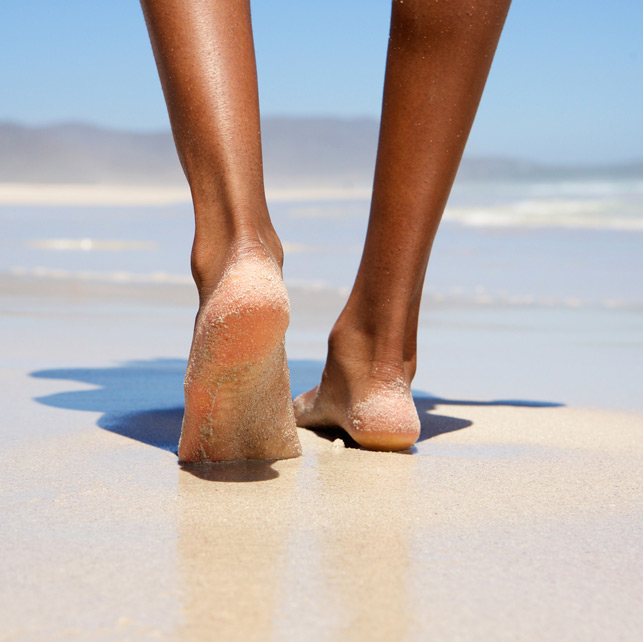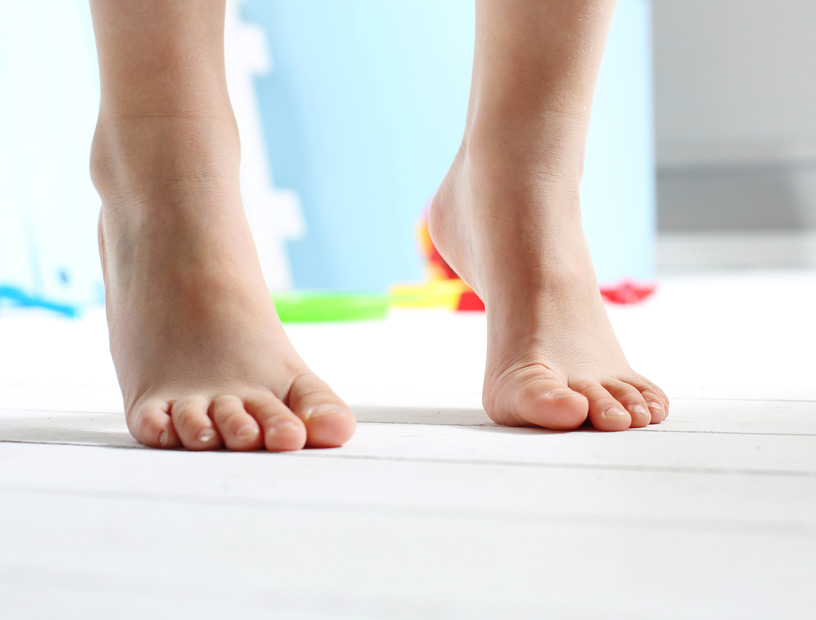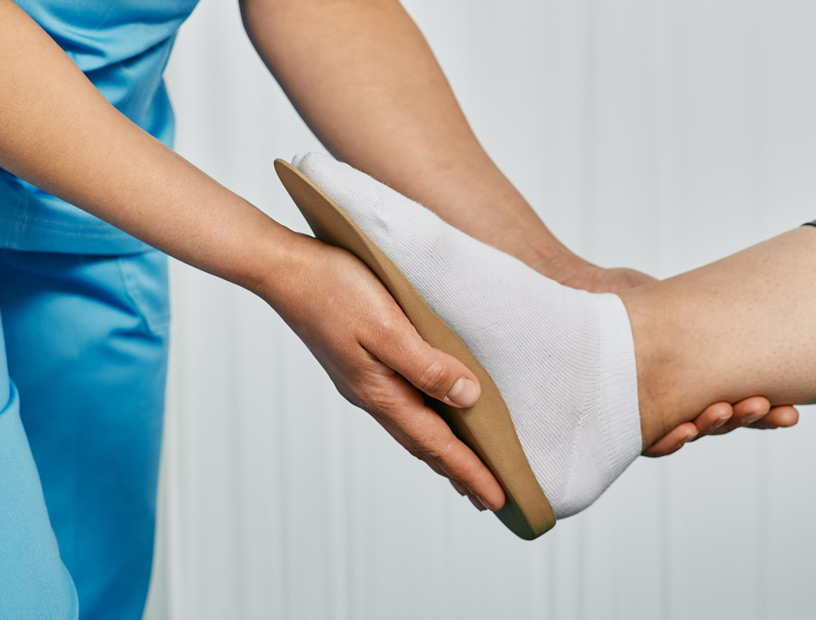
Find relief from symptoms caused by flat feet with Orange County Orthopedic Clinic.
A flat foot is one in which the entire sole of the foot can touch the floor. It is normal in infants and small children, because their arches have not yet developed. Some children have flexible flat foot, where they seem to have a normal arch while sitting or standing on tiptoes, but their feet flatten when they stand normally.
- It is possible for arches to fall over time or not ever develop as childhood goes on
- A person with flat feet is also described as having “fallen arches”
Causes
A normal foot curves upward in the middle. The upward curve, which is called an arch, is formed by tendons that stretch across the foot and attach at the heel and the front of the foot. More tendons in the lower leg also help form the arch. When the tendons all pull together properly, they produce an arch. A flat foot, by contrast, is caused by overly slack tendons.
Flat feet in older children, teenagers and adults have multiple causes that can include the following:
A congenital defect
A foot injury that has torn or stretched the tendons
Nerve disorders
Certain disorders, like rheumatoid arthritis
Inflammation or injury of the posterior tibial tendon (PTT) is a common cause of flat foot. The PTT extends down from the lower leg and crosses the ankle to end at the mid-arch.
There are also risk factors that increase the chances of developing flat feet. They include the following:
- Aging
- Pregnancy
- Obesity
- Diabetes
Symptoms

Many people with flat feet experience no symptoms other than the lack of a visible arch. Other people may develop some of the following symptoms:
- Foot pain, especially in the heels or arches
- Feet that tire easily
- Leg or back pain
- Difficulty with some foot movements, like standing on tiptoes
- Tendency for the inside of the ankle or sole to swell
In some cases, physical activity exacerbates the pain. Patients who experience pain or any of the other symptoms need to see a doctor.
Treatments
An orthopedic doctor will start by taking a detailed medical history to uncover any injuries or illnesses that might have caused the flat feet. They will also examine your feet and have you perform simple movements like standing on tiptoes.
They will test the strength of your tendons and muscles, and they may also take imaging tests like X-rays or MRIs to get a better look at your feet.
The orthopedist may recommend home remedies to manage or prevent pain like taking over-the-counter pain medication, resting the feet, or using ice therapy. They may also advise you to avoid high-impact sports like tennis or basketball, because they will put more stress on the feet and make the pain worse. Your doctor may also recommend physical therapy including stretching exercises. They may prescribe pain relief medications, including corticosteroid injections.
If you are in severe pain, the doctor may recommend surgery. This can consist of any one of several different procedures that include removing bone spurs, transplanting tendons from other parts of the body to strengthen the foot tendons, or reshaping the bones of the foot.

on caring for specific orthopedic needs.
